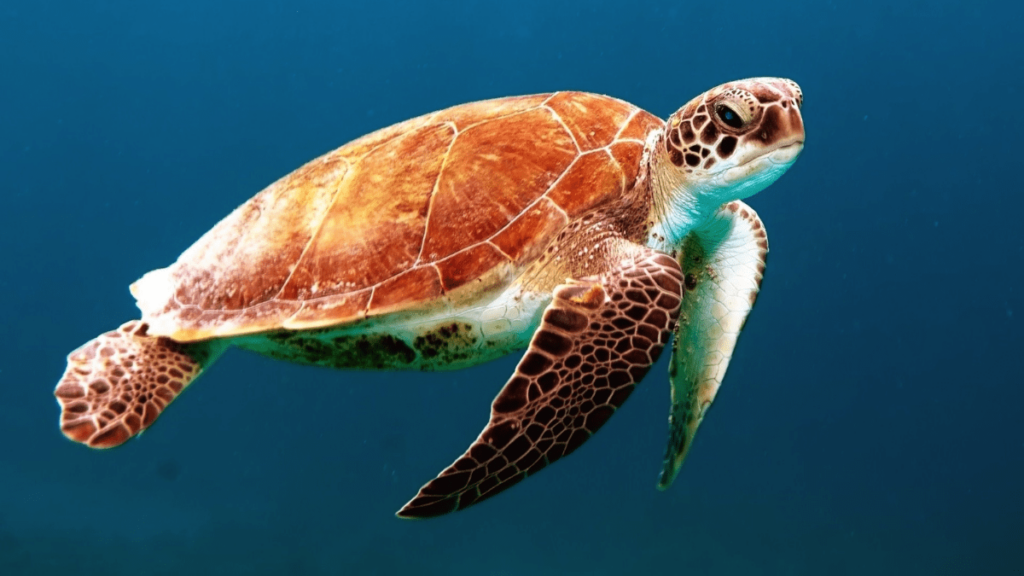So, are you wondering what do sharks eat? Contrary to popular belief, the main part of a great white shark’s diet is not hippy-girl leg or small beach-going boys.
In fact, great whites don’t like eating people at all – they prefer their prey high in rich fat, and even the most portly of individuals doesn’t contain enough fatty goodness to satisfy a great white’s dietary requirements. Human beings are, simply put, far too bony (and not nearly fatty enough) for great whites.
What, then, do great whites eat? Some of the things on this list will be common knowledge – many of us have seen YouTube videos of great whites breaching the water on the hunt for their favorite prey – while others will surprise you as we’re still discovering unusual things about the shark’s dietary habits even in 2023.
Without further ado, then, let’s take a look at the 5 most important parts of a great white shark’s diet.
Pinnipeds

You’re probably wondering just what, exactly, a pinniped is and where it factors into a great white’s diet. You wouldn’t be alone in this!
A pinniped is simply an animal with fins or flippers for feet (‘pinni’ meaning ‘fin’ or ‘flipper’ and ‘-ped’ meaning ‘foot’).
It covers seals, sea lions, and walruses – though it’s a rare great white that is willing or able to take on the latter.
Pinnipeds such as seals are easily a great white shark’s most famous prey – as well as their favorite. They typically hunt the animal at dawn or dusk, when visibility is still quite low, and the seals have trouble seeing them.
Great whites make use of their countershading to ambush the seals on the surface. Their grey dorsal skin allows them to blend into the seabed, ensuring that the seal is unable to spot them as they maneuver into place.
The shark then swims rapidly upward, reaching speeds of 25mph (40km/h) before hitting the seal with a sort of ‘shock and awe’ tactic.
If they connect successfully, the seal is disoriented and likely bleeding to death. If not, it will quickly attempt to get to land or an ice shelf, where it can avoid further attacks.
Hunting success is 55% in the early hours of the morning; this drops off as it gets lighter to about 40%. At this point, the shark gives up its hunting efforts for the day.
Cetaceans
Cetaceans are aquatic mammals, including whales, porpoises and dolphins. Great whites actively hunt the latter two and will opportunistically scavenge the carcasses of the former.
Cetaceans such as dolphins have an inbuilt defense against shark attacks: echolocation. The great white gets around this by attacking from the rear or below, where it remains undetected by the dolphin until too late.
But even guile and cunning are not always enough against the extremely intelligent dolphins, who are often able to avoid great white attacks.
Furthermore, dolphins are never caught alone but are with their pods, and in the event of a great white shark attack, the pod will band together to drive off the solitary shark.
When it comes to whales, most are too large, even for the gargantuan great white to take on. However, older great whites prefer whale blubber because it’s a rich source of fat coming from something that won’t fight back, and the biggest and oldest great whites can often be found at the site of a whale carcass, greedily tearing chunks from it to be devoured immediately.
Such a meal can last a great white weeks or even months.
How Often Do Sharks Eat Sea Turtles?

Sea turtles have an innate defense against predation in the open ocean: their incredibly tough and sturdy shells, which most predators are unable to get through.
The exceptions to this are tiger sharks and great whites. The former is the more effective of the two at hunting sea turtles due to their serrated teeth that are well-suited to shearing through bone and shell. The latter, while not having teeth quite as up to the task, makes up for this with sheer bite force.
This bite force is used to simply bite through the shell, most often around a flipper, to immobilize the turtle. This makes it extremely easy for the shark to consume the animal at its leisure – in theory.
The reality is that sea turtles are as reluctant to be eaten as any other animal and have evolved a defense against predation. The defense is as simple as it is effective; simply turn away from the shark to present the top of the shell to it. This makes it too wide to easily chomp on and often ensures the turtle can escape.
However, not even this is enough to deter some great whites – at their peril. In 2019, a great white that was determined to snack on a turtle ended up choking to death.
Photosensitive Animals
The most mysterious element of a great white’s diet is that found in places like the White Shark Café or anticyclonic eddies in the Atlantic – photosensitive animals such as squid and certain species of fish.
Why great whites like to eat these animals over their usual prey is a complete mystery, as is the reason why they travel thousands of miles to do it.
Research into the unusual switch in dietary preferences is ongoing, so watch this space. When we know more, so will you.
What Fish Do Sharks Eat?

Great whites are not averse to eating fish and other sharks, and though they are not their preferred prey, they will cheerfully eat them given the opportunity. Juvenile great whites, in particular, will feast upon fish, as they’re not yet large enough to tackle preferred prey like seals.
This, perversely, includes other great white sharks, particularly while still in utero. Great white pups, hatched but not yet born, eat each other in the womb.
So, Just What Do Sharks Eat?
As we’ve seen, some of the great white shark’s dietary habits are obvious (everyone knows that they like to eat seals), while others are a little surprising (such as traveling thousands of miles to snack on squid).
One thing is for sure – great whites are opportunists every much as they are calculated hunters. While they may be portrayed as relentless and terrifying hunters with a very particular palate, the fact is that they’re happy to eat just about anything they can get their teeth on.
Wait, Do Sharks Eat Humans?
Except for human beings, of course. Despite some infamous great white shark attacks over the years, these are often due to mistaken identity, as you’re simply too bony to cater to their dietary preferences.
